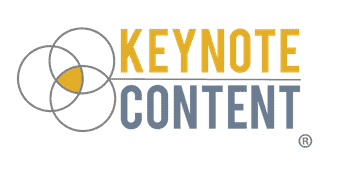Fact: most brands don’t manage the length of their content well.
Countless blog posts are too long. Full-length tweets take up too much space. Some content is crammed into a blog post when an eBook would be a much better format for it to live and breathe. When it comes to content, one size does not fit all. You need to find the right amount for your audience. (Tweet this!)
Different people like different amounts of your message. Your best friend will read your 3,000 word blog post because frankly, you can do no wrong in their eyes. Your potential clients probably won’t be so willing.
When it comes to your brand content, it’s about finding the right channel for the right length of your message. Sometimes content needs to be cut down to size for the right fit. It starts with knowing the right parameters for each arena your content can call home.
- Social media posts are the snack version of content. They need to be small, pithy, shareable, easy to digest, and not take up a bunch of preparation or execution. The quality still matters, but it’s not meant to be an entire meal.
- Twitter is 140 characters or less, that’s all. I highly recommend using no more than 125 characters so there’s white space available for retweets and commentary from others as they share your content. If you’re using all 140 characters to make a great point, it handcuffs the tweet’s potential to reach a larger audience. Use a link shortener to save space.
- Facebook has less restrictions than Twitter’s 140 character count, but it still has its limits. Your content needs to catch your audience’s eye in a quick glance through their newsfeed.
- Blog posts should be no more than 500-600 words. Any longer and you start to lose the short story feel of your post… and your reader’s attention! If you have more to share, break it up into more than one post.
- eBooks are a great way to share longer messages with your target audience that can’t be contained in a blog post. eBooks allow you the freedom to expand on certain nuances of your message that can be devoured in an hour or much less. The typical range for an eBook is between 3,000-5,000 words. Page count isn’t nearly as important as it is with typical book formatting because the visual nature of an eBook allows for more pages with lesser type per page.
- The timeless marathon of content is books. A typical non-fiction book hovers between 50,000-70,000 words and gives the writer more latitude to chase rabbit trails than a blog post can afford. This takes an incredible amount of focus and work to create compelling content to fit this length.
Find the medium that best fits each part of your message and see how your audience responds. Sometimes finding the right fit is the only thing your content is missing. Are you willing to break up your content to make it more digestible for your audience?
What are some factors you consider when fitting your content length?


